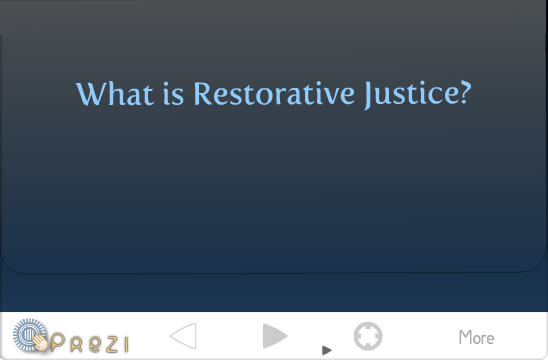The process was originally called Restorative Circles, but was renamed Huikahi Restorative Circles to distinguish Hawaii’s reentry planning process from other restorative processes. In Hawaiian, hui means group, and kahi means individual. Together the word huikahi, for purposes of this process, signifies individuals coming together to form a covenant. The addition of Huikahi to the name was a result of the input of a Native Hawaiian prison warden.
While the modern restorative justice movement is about 30 years old, many trace its roots back to “most of human history for perhaps all the world’s peoples” (Braithwaite, 2002, p. 5). Circle processes are a fundamental practice of the restorative justice movement (Zehr, 2002), and Peter Senge, co-founder of the MIT Organizational Learning Center, believes “no indigenous culture has yet been found that does not have the practice of sitting in a circle and talking” (Isaacs, 1999, p. xvi).
Today research confirms that restorative justice is an evidence-based practice that reduces criminal recidivism (Sherman & Strang, 2007), and there is a growing movement to use restorative practices in reentry for incarcerated people returning to the community (Bazemore & Maruna, 2009).
While restorative justice provides the theoretical underpinning for the Huikahi Circles, its facilitators utilize solution-focused brief therapy language during the process. Solution-focused therapy acknowledges that a therapeutic process “happens within language and language is what therapists and clients use to do therapy” (de Shazer, 1994, p. 3). In this way, language is used to help people discover their inherent strengths and establish their goals and ways to achieve them. Insoo Kim Berg, a co-founder of solution-focused brief therapy, assisted in the design of the Huikahi Circle process.
The full article was published in Volume 74 Number 1 of the Federal Probation Journal. Also available on the internet, here.









No comments